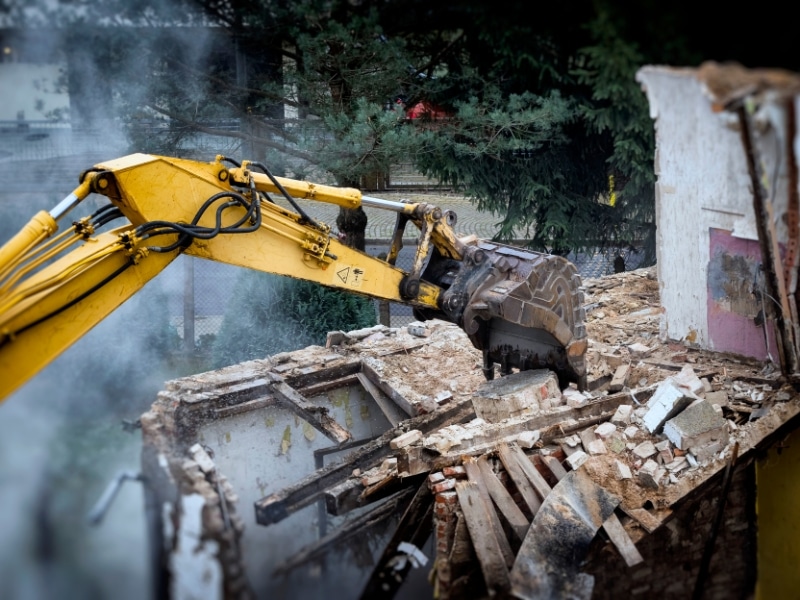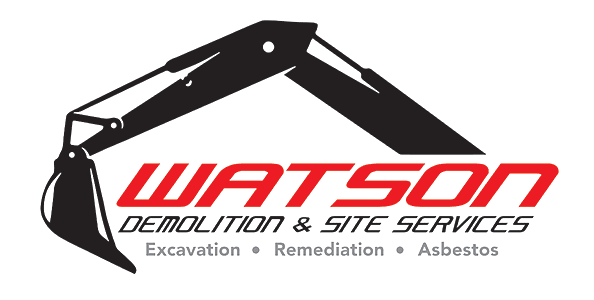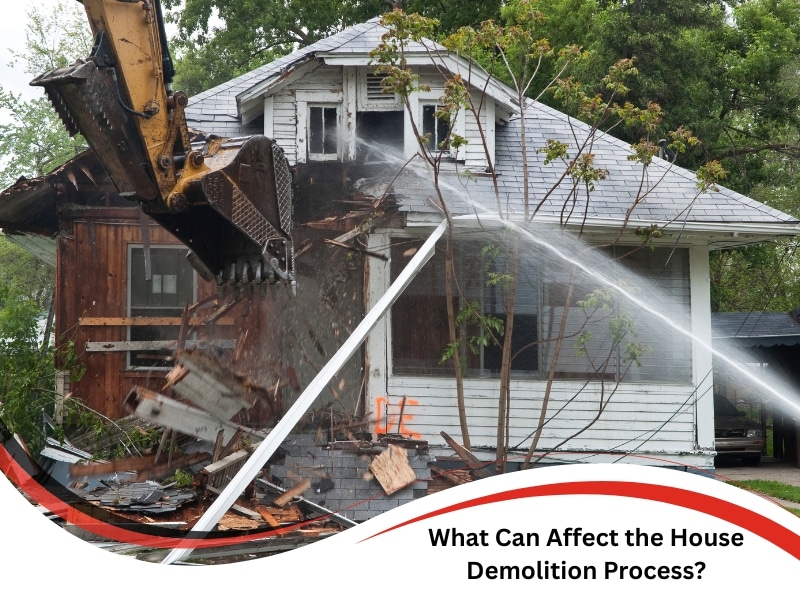Demolishing a house might seem straightforward, but the reality of the house demolition process involves navigating council regulations, coordinating skilled trades, and preparing for surprises behind the walls. It’s rarely as quick or simple as swinging a sledgehammer. This article explores the factors that can complicate or delay the demolition process and helps you understand how to approach the job with clarity, efficiency, and confidence. Whether you’re clearing a site for new development or addressing a crumbling structure, being across the house demolition process gives you a definite leg up.
What should you consider before the house demolition process begins?
Before knocking anything down, you need a clear plan and a few critical approvals. Missing these early steps can result in delays or legal trouble down the track. Things to consider before demolition starts:
- Local council permits and approvals are non-negotiable and often take longer than expected to secure.
- Utility disconnections for gas, water, and electricity must be booked in advance to avoid hazards or delays.
- Hazardous material inspections are essential, particularly for homes built before the mid-1980s, which may contain asbestos.
- Neighbour notifications and boundary checks can prevent disputes and maintain a civil atmosphere during noisy work.
- Access for machinery and waste removal is often overlooked until it’s too late — narrow driveways and overhead wires can cause real strife.
Starting the process without a clear understanding of these basics can put you at a disadvantage. A calm, well-prepared approach always pays off.
What problems can delay or disrupt a house demolition process?
Even with solid planning, things can go awry once demolition begins. Certain issues can derail your timeline or quickly rack up extra costs. Frequent causes of demolition delays include:
- Licensed professionals must carefully remove hidden asbestos or lead paint.
- Unpredictable weather, exceptionally high winds or heavy rain can halt work for safety reasons.
- Last-minute permit issues from the council are often triggered by neighbour objections or missing documentation.
- Unstable structures that require additional engineering before machinery can be used safely.
- Heritage overlays or environmental restrictions that weren’t flagged during initial planning.
To avoid major headaches, it’s smart to explore trusted solutions for managing house demolition. Working with a team that’s seen it all can make a challenging process much more manageable.
Why do legal and safety rules complicate the house demolition process?
Red tape and risk mitigation both play significant roles in demolition. While frustrating, these rules exist to prevent serious injuries and protect the environment, but they do add layers of complexity. Legal and safety factors that impact demolition:
- Detailed safety management plans must be developed and approved before commencing work.
- Site fencing and signage are necessary to ensure the safety of the public and nearby properties.
- Waste handling rules require sorted disposal of timber, concrete, metal, and hazardous materials.
- Contractor licensing and insurance must be verified to avoid liability in case of damage or injury.
- Noise and work hour restrictions are tightly regulated in many urban areas.
If you’re unsure where to start, understanding how to safely plan your house demolition can help you move forward without putting yourself or your crew at risk.
What are the biggest risks of doing your own demolition?
DIY can sound appealing if you’re handy and want to save on labour. But when it comes to house demolition, going it alone carries significant risks — and in many cases, it’s not even legal. Common dangers of DIY demolition:
- Serious injuries from falling materials, tool mishandling, or structural collapse.
- Unintentional damage to stormwater pipes, sewer lines, or neighbouring properties.
- Exposure to toxins like asbestos or mould without proper protective gear.
- Council fines for non-compliance or improper waste disposal.
- Insurance nightmares if damage occurs during unauthorised works.
You’re often better off leaving it to the pros. The benefits of demolishing a house before renovation, using a licensed team, far outweigh the risks of attempting to do it yourself.
Comparison: DIY vs. Professional Demolition
Risk Factor | DIY Approach | Professional Approach |
Injury risk | High – limited safety knowledge | Low – trained crew and safety gear |
Structural damage possibility | High – lack of planning or experience | Low – assessed and controlled removal |
Legal compliance | Often missed or misunderstood | Fully compliant with local laws |
Waste handling and disposal | Unorganised or incorrect | Systematic and legally compliant |
Hidden hazard detection | Rarely identified | Identified during pre-demolition checks |
Insurance coverage validity | Often voided by unauthorised work | Maintained under licensed operation |
This table clearly shows why demolition isn’t a job to take lightly — even if you’re handy with the tools.
How can the demolition process for houses be made more efficient?
Once you’ve locked in approvals and chosen a qualified crew, it’s all about keeping the process smooth and minimising waste. Efficiency reduces stress and cuts costs. Efficiency tips for your demolition project:
- Book skip bins and transport in advance to avoid a material pile-up on-site.
- Use the right equipment for each stage, from manual teardown to mechanical diggers.
Salvage reusable materials, such as bricks, timber, and metal, before demolition begins. - Hold regular progress check-ins with your contractors to catch issues early.
- Prepare for hazardous waste disposal — knowing where and how to dump things matters.
A significant part of staying efficient involves understanding asbestos risks during demolition — failing to detect or handle these risks early can significantly derail your timeline and compromise site safety.
When does demolition become the best option for an old structure?
There comes a point where repairs become a money pit, and the smartest move is to start anew. Identifying that tipping point isn’t always easy, but a few clear signs can guide your decision. Signs that demolition is a better choice:
- Foundational damage like subsidence, large cracks, or tilted walls.
- Termite infestations have severely weakened structural timber.
- Renovation costs that exceed the property’s future resale value.
- Design limitations in older homes that can’t be feasibly altered.
- Zoning or redevelopment plans that favour a new structure on the site.
If you’re facing one or more of these issues, demolition might not just be an option — it could be your best move forward.

How do you know if the house demolition process was successful?
Success in demolition isn’t measured by how quickly the walls come down — it’s about whether the job was done cleanly, legally, and safely. Key outcomes of a successful demolition:
- All materials are removed and disposed of appropriately, with no residual hazards left behind.
- The site is clear, level, and ready for the next stage, whether that’s building or landscaping.
- All permits and inspections have been closed out and signed off by the authorities.
- No unplanned damage occurred to adjacent properties or underground infrastructure.
- Safety incidents were avoided through smart planning and execution.
When those boxes are ticked, you’ll know your demolition team has done the job right.
Final thoughts
House demolition is never as simple as it first appears. Still, with the proper planning and professional support, it can be a streamlined and safe process. Avoiding delays and costly mistakes comes down to being informed and choosing experienced contractors who prioritise safety and compliance. For guidance shaped by experience and local insight, discover how Watson Demolition & Site Services can assist with your project to move forward with confidence.

